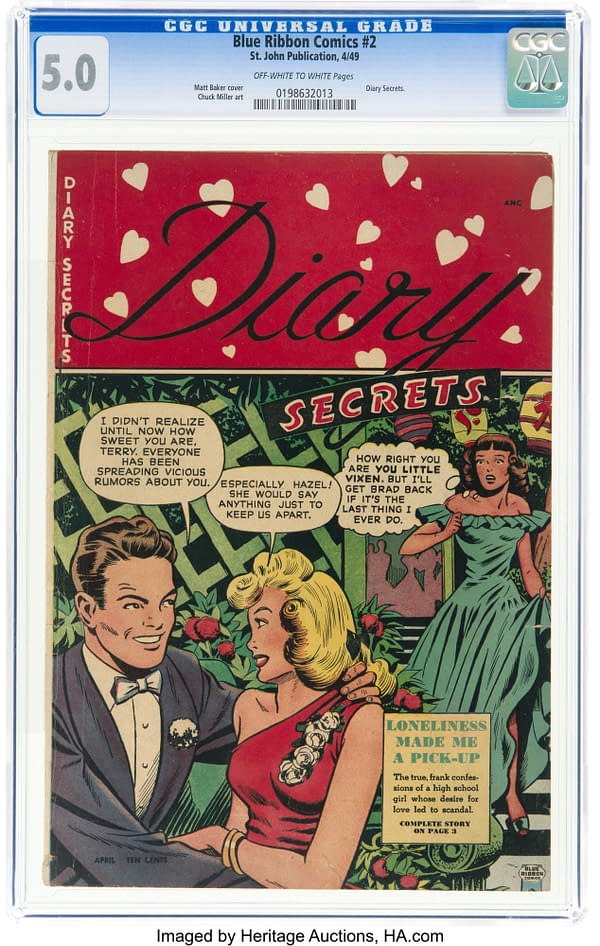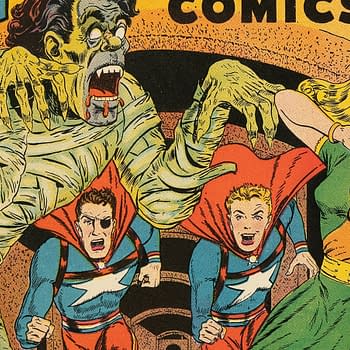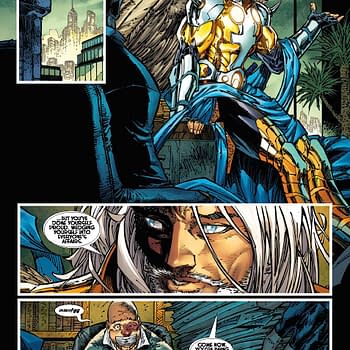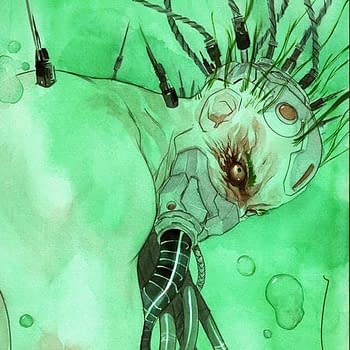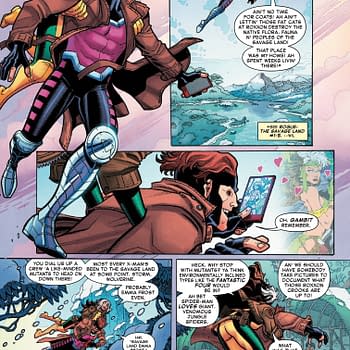Posted in: Comics, Heritage Sponsored, Vintage Paper | Tagged: Matt Baker, nike, St. John Publications
The Strange Case of St. John's Blue Ribbon Comics, Up for Auction
The strange case of St. John's Blue Ribbon Comics, and what it has to do with Matt Baker. With special guest star, Nike's Phil Knight.
Article Summary
- Exploring St. John's ephemeral use of the Blue Ribbon Comics which included Matt Baker covers.
- Insight into the unregistered Blue Ribbon Comics trademark and its forgotten legacy.
- St. John's Blue Ribbon Comics served as a launchpad for Terrytoons and Diary Secrets.
- Phil Knight's Blue Insignia Sports' connection to an old MLJ pulp name and Nike's origin.
St. John Publications' use of the title Blue Ribbon Comics in 1949 is an oddity from a publisher whose history is filled with such quirks. Of course, the name is far better known as the very first comic book series published by MLJ Magazines — the entity that would one day be known as Archie Comics. But it was also MLJ's first failure, which may explain why St. John was able to use the title in 1949. St. John editor Irwin Stein characterized the name as a "try-out title" when historian John Benson interviewed him for his book Confessions, Romances, Secrets, and Temptations: Archer St. John and the St. John Romance Comics. St. John's Blue Ribbon Comics can be considered a test bed ahead of a series launch, perhaps something along the lines of the DC Comics' title Showcase. Two of these test issues feature Matt Baker covers, and the one of these, Blue Ribbon Comics #2 (St. John, 1949) CGC VG/FN 5.0 Off-white to white pages is up for auction in the 2024 July 18 The Matt Baker Comics Showcase Auction #40267 at Heritage Auctions.

There's no record of either MLJ or St. John ever registering a trademark for Blue Ribbon Comics, either in the online USPTO database or in the published Official Gazette of the United States Patent and Trademark Office of those eras. While there are a few "official" scenarios by which St. John could have acquired the trademark either directly from MLJ or via reviving it as abandoned (which implies they would have registered the trademark), the most likely scenario is that neither St. John nor MLJ cared enough at that time to bother. Blue Ribbon Comics seems to have been intended as a temporary title for St. John, and for MLJ, it was one of the biggest fumbles of their comics publishing era.
Though the title seemed to have hit its stride editorially after several months, with the introduction of Mr. Justice and Captain Flag, it's clear that MLJ realized with Blue Ribbon Comics #19 that they might have a branding problem. Blue Ribbon started as a brand name used by MLJ principals Louis Silberkleit and Maurice Coyne in pulps, as the imprint Blue Ribbon Magazines and the titles Blue Ribbon Western and Blue Ribbon Sports. In keeping with that strategy, the "Blue Ribbon" portion of the title logo soon became a tiny part of the cover, with the central focus being simply "COMICS." This might have seemed like a sound idea when it was dreamed up in mid-1939, as publishers didn't really know how the comics business was going to play out yet, but in the crowded market of late 1941-1942 it didn't work. With issue #19, Captain Flag took up prominent space in the logo area. By issue #21, an editorial in the title was touting a shift to include "true life" stories in addition to adventure fiction.
Obviously, MLJ was not happy with the result, as the title ended just an issue later. While MLJ's Blue Ribbon Comics ended in 1942, by the time of St. John's usage in 1949, the pulp version of the brand was still ongoing with Blue Ribbon Western, which lasted until 1950. It's likely that even if MLJ had cared about the matter, they might not have noticed. Only St. John issues #1-3 contained unobtrusive Blue Ribbon Comics branding on the covers.
The St. John series lasted six issues and essentially had two purposes. First, it soft-launched the Terrytoons titles Heckle and Jeckle and Dinky Duck. Perhaps more importantly, it appears to have served as a test bed to experiment with how to launch what would become one of St. John's most important titles, Diary Secrets / Teen-Age Diary Secrets. Through three appearances in Blue Ribbon Comics, St. John tweaked Diary Secrets' title, logo, cover design and the nature of the cover itself. Two of the three Diary Secrets / Teen-Age Diary Secrets entries in the title featured Matt Baker covers, with the third and final "try-out" issue featuring a photo cover.
While St. John ultimately chose to roll with the title Teen-Age Diary Secrets using photo covers (famously featuring a young Marilyn Monroe at the cusp of her rise to stardom on issue #6), the experimentation didn't end there. Two of the title's issues were released in digest format, with St. John business manager Richard E. Decker proclaiming that, "We predict within a year that most comic magazines will be pocket size."
Fresh from his role as circulation manager at The American Mercury, Decker may have been eager to make his mark at St. John. However, that predicted comic book industry shift didn't happen, and after a six-issue run (actually nine, as the numbering counted the three Blue Ribbon Comics entries) St. John seems to have rethought the title entirely. "Teenage" was dropped from the name in favor of simply Diary Secrets, the photo covers were ended in favor of Matt Baker artwork, and the soft-rebooted series got a fresh logo and cover design. The Blue Ribbon branding was a forgotten memory by that time.
Forgotten perhaps, but not forever. In an odd twist of fate, "Blue Ribbon Sports," a name once used as a pulp title for sports stories by Louis Silberkleit and Maurice Coyne's Columbia Publications, next surfaced as a corporate name and trademark for a company launched in 1963 by Phil Knight to sell athletic shoes. Blue Ribbon Sports officially changed its corporate name to Nike in 1978, but has kept the original brand name alive.
It's doubtful any other company will get its hands on that particular permutation of the brand for any reason whatsoever anytime soon. By contrast, Archie Comics briefly used the Blue Ribbon Comics title name again 1983-1985, but it's become largely forgotten again, except among vintage comic book collectors — and mostly MLJ collectors at that. As is often the case with Baker's St. John covers, the Blue Ribbon Comics #2 cover is based on the interior story here, a rather self-explanatory tale called Loneliness Made Me A Pickup written by St. John romance mainstay Dana Dutch with art by Chuck Miller. It's a classic early St. John romance cover by Matt Baker, and there's a Blue Ribbon Comics #2 (St. John, 1949) CGC VG/FN 5.0 Off-white to white pages up for auction in the 2024 July 18 The Matt Baker Comics Showcase Auction #40267 at Heritage Auctions.
